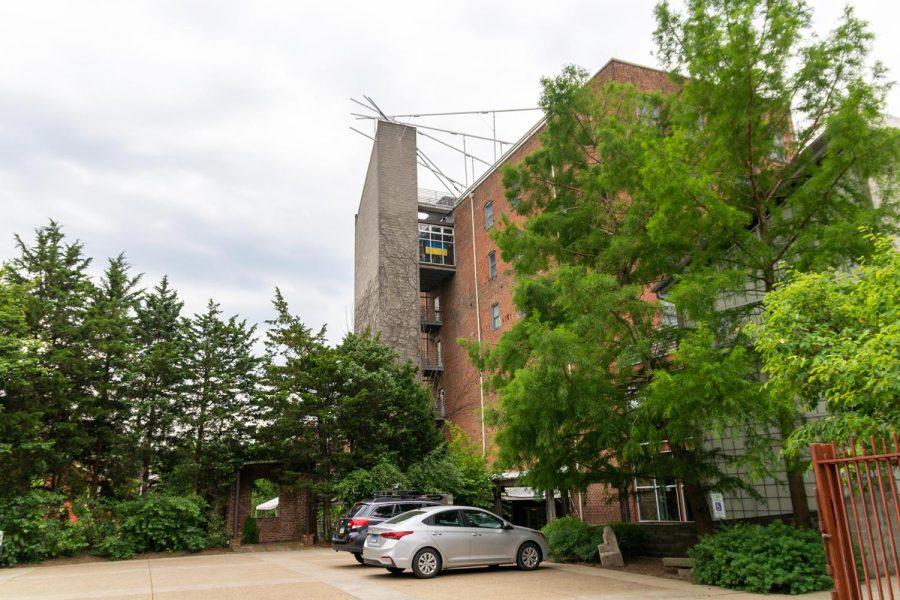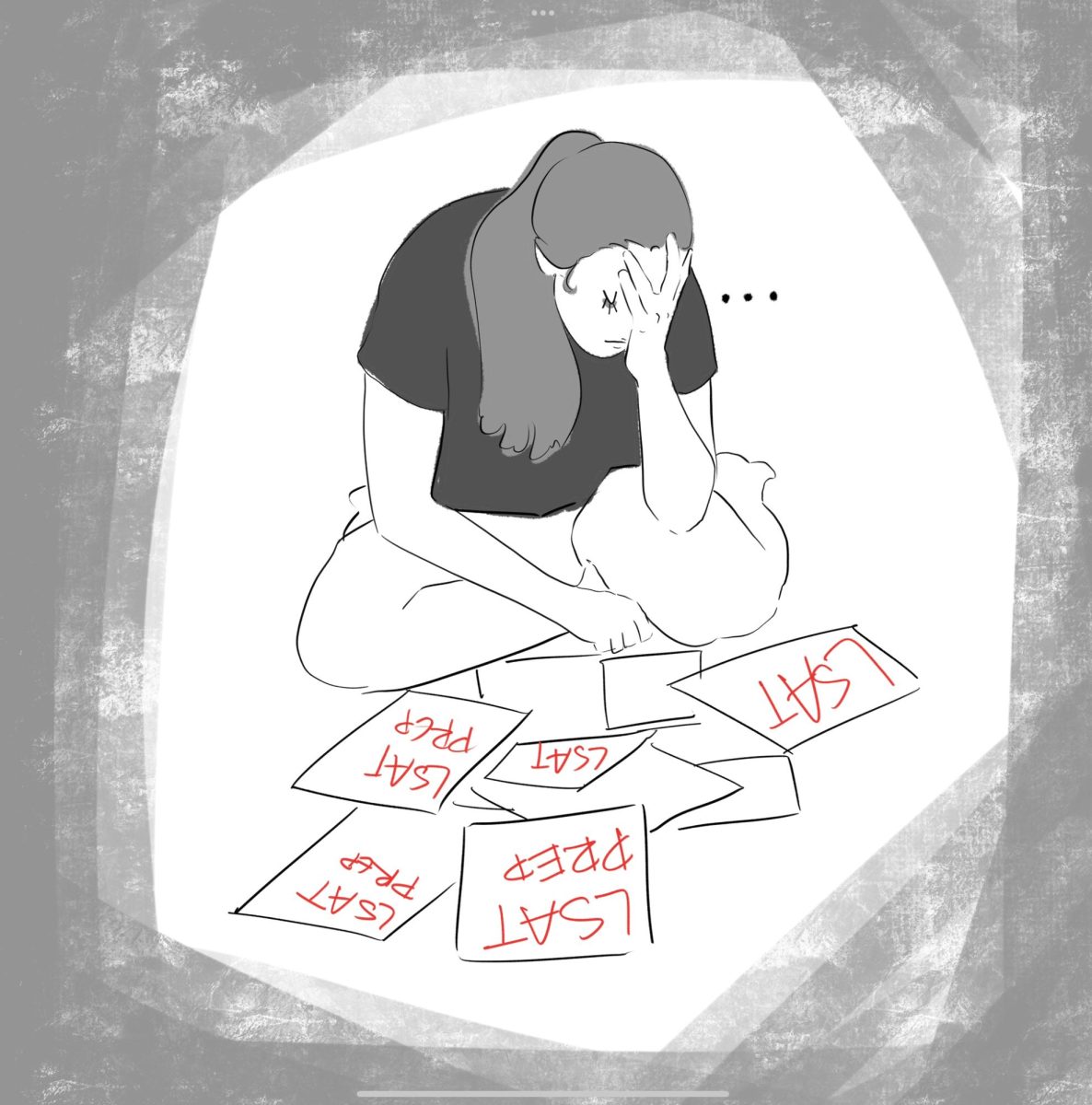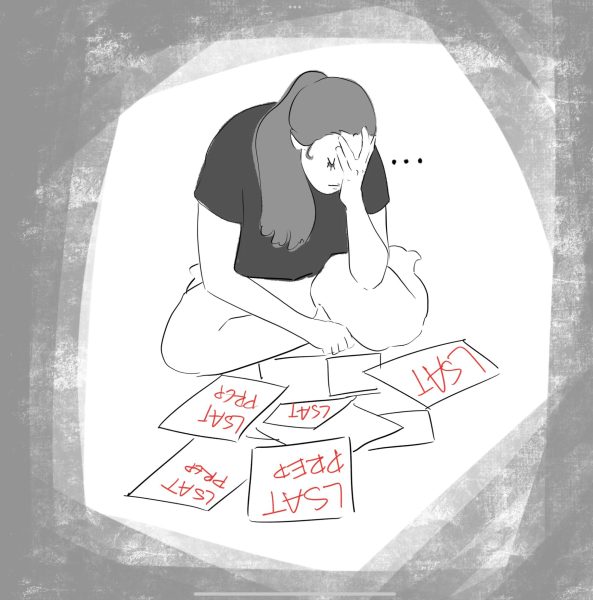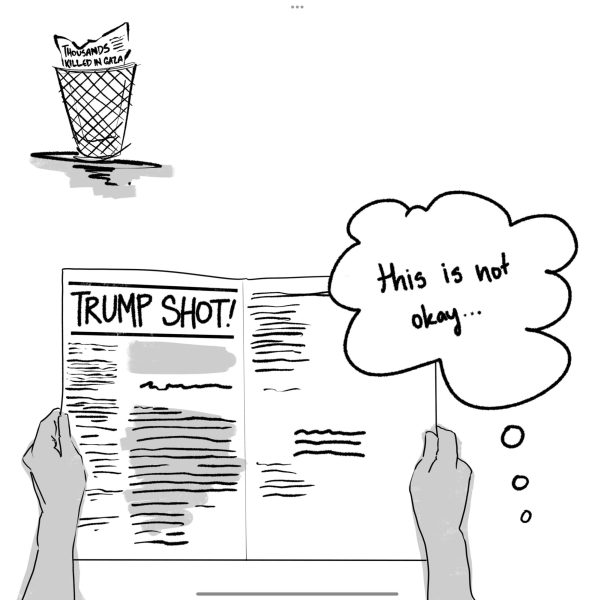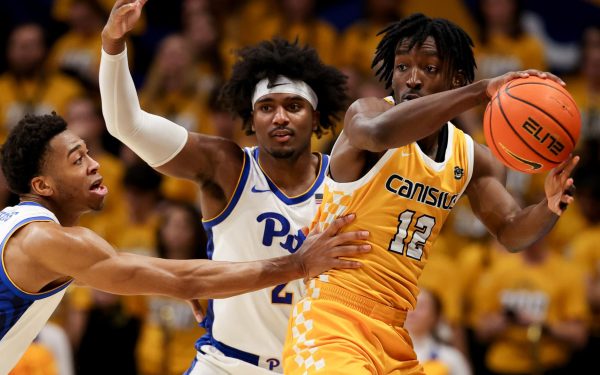Mattress Factory features three new exhibits exploring waste, imagination and search for meaning of life
March 28, 2023
In the entrance of the Monterey Annex of the Mattress Factory, trash piles accumulate within the pristine, white space. These bits of discarded cans, chip bags, cardboard boxes and other waste products make up one of the Mattress Factory’s latest exhibits, “The Museum Collects Itself” by local duo Lenka Clayton and Phillip Andrew Lewis.
This exhibit opened earlier this month along with exhibits “Do this while I wait” by Lydia Rosenberg and “As Seen From the Surface” by Katie Bullock.
According to the artist statement, Clayton and Lewis’ exhibit diverts almost all of the waste the museum produces, except food or biohazard waste, and has it accumulate within the first floor of the Monterey Annex. As of right now, this trash includes food wrappers, cardboard boxes, office supplies and construction materials.
“Simply put, the idea is to use the frame, the area of the museum that’s about looking and paying attention, which is the gallery spaces, and putting that frame over something which is designed to not be seen and to be invisible, which is the waste system,” Clayton said.
Through this analysis, Clayton and Lewis present an unconventional view of the museum, one that will continue to evolve throughout the 10 months the exhibit is up. As the exhibit continues to grow, Clayton and Lewis will learn about the museum along with the exhibit’s viewers. Lewis said because the exhibit is collaborative, they don’t have control over the finished product.
“That accumulation of materials, you can think of it like an extended self portrait,” Lewis said. “We aren’t placing any of the trash. We’re not aestheticizing or making ‘art’ out of the trash, we’re allowing it to naturally, organically form and swell and build.”
This project required a considerable amount of the museum’s collaboration. Danny Bracken, director of exhibitions, said the project requires the help of the entire museum staff.
“We have a whole schedule,” Bracken said. “We’re trying to get basically everyone at the museum involved in it. Because everyone is generating the trash, everyone is participating in the sorting of it.”
Four days a week, a member of the museum staff, from the docents to the director, takes the trash down to the exhibit to lay it out and catalog it within a growing list of items. Clayton said this list is a particularly interesting part of the project.
“One thing that’s been really inspiring or interesting has been the written list, which feels like a concrete poem. It’s really beautiful,” Clayton said. “A different person writes it every day and they write in their own descriptive voice. So this long poem that is generating itself is a gorgeous part of the work and one that we couldn’t really pre-imagine.”
By the end of the exhibit, Clayton and Lewis plan to publish a book featuring the list of items, photographs of the exhibit’s progression and interviews with various people about the exhibit.
Moving up the stairs of the Monterey Annex is Lydia Rosenberg’s new exhibit “Do this while I wait.” The exhibit consists of a dark gray room filled with cleaning supplies lit from below by a warm, orange light. These cleaning supplies include brooms made from wood and rubber, but also more surreal ones such as vocabulary books or strings of alphabet beads.
According to Rosenberg’s artist statement, the exhibit is part of a larger project to represent a novel through sculpture form. “Do this while I wait” focuses on the mental space of a singular character, Annette, who is an artist who struggles to make time for her art because of her job. The room at the Mattress Factory portrays Annette’s mind as she follows a guided meditation to clear her head.
“In that process of trying to clear things out, she starts to imagine this endless inventory of domestic cleaning tools that are supposed to help her with the process of emptying her mind, but they actually start to fill up that meditative landscape,” Rosenberg said.
“Do this while I wait” is the third exhibit contributing to Rosenberg’s novel-sculpture. Rosenberg said the larger project explores the relationship between language and material objects.
“I’m really interested in the ways that language is creating new entities and then pushing that as far as I can to actually making these new entities,” Rosenberg said. “So the whole project at large is really about the process of moving from one form to another, and in that moving from form to form, you’re not making just translations, you’re making something new.”
By creating familiar objects out of unconventional materials, Rosenberg said she invites viewers to reflect on the potential functions each tool has.
“So in my mind, those book brooms are intended to help a person clean up communication problems in a very one to one way,” Rosenberg said. “But I think some of the other pieces leave a little bit more room for the viewer to make a decision about what they might use that tool for, be it magical, existential or practical.”
Rosenberg’s novel-sculpture is still within its beginning stages, with the next installation coming later this October in the Here gallery, located in the Mexican War Streets district in Northside.
Continuing up into the Monterey Annex is Katie Bullock’s exhibit “As Seen From the Surface.” This installation consists of large glass panels displaying traced text, sketches, scientific diagrams, photographs and projected videos, all archiving Bullock’s search for meaning in life.
“I’ve been collecting these and tracing these since 2016,” Bullock said. “In addition to collecting found text, I’m also always collecting pictures and videos of everyday moments that look simple, that consist of familiar things, but they come together to form unfamiliar phenomena.”
Each fragment of the archive depicts seemingly disconnected moments, such as a spider weaving a web or photographs from her time in the Arctic, that form part of a larger narrative about Bullock’s life and her place in the world.
“It’s kind of this impossible archive because it’s never going to be complete — it’s this unfolding of my understanding of the world and trying to make sense of it and what my place is in it, how I have agency in it, what my impact is and that will never be complete,” Bullock said.
By displaying the documentation of her life, Bullock said she hopes viewers will reflect on their own lives.
“Something I’m most excited about is the conversations that happen from it,” Bullock said. “Because there’s some moments where people see that there are moments of recognition, and they’re like, ‘Oh, something similar happened.”
Bullock, Clayton and Lewis will host coffee dates at the museum later in the year to discuss their exhibitions. The “coffee date” is an hour-long event during which the artists will discuss the meaning and process behind their exhibits.
Lewis added that he had a positive experience collaborating with the museum.
“I think, specifically with the Mattress Factory, this opportunity was really interesting to us because it has such a rich history of experimentation and thinks of the institution as a laboratory for artists to produce new projects,” Lewis said. “They’re very artist-centered and, from our perspective, let the artists lead the projects, which is really exciting and is a rare opportunity.”


